Abstract
Positive behavior support (PBS) is an approach to providing services to individuals who exhibit challenging behavior. Since its inception in the early 1990s, PBS has received increasing attention from the behavior-analytic community. Some behavior analysts have embraced this approach, but others have voiced questions and concerns. In this paper we describe the framework of PBS and show that it is consistent with the tenets of behavior analysis. Also, we illustrate how the framework of PBS might be used to guide practitioners and researchers in the field of applied behavior analysis. We hope to demonstrate that PBS offers useful suggestions regarding how applied behavior analysts can design and evaluate effective programs for people with developmental disabilities or behavioral challenges.
Keywords: applied behavior analysis, positive behavior support, developmental disabilities, theoretical issues in behavior analysis
Full text
PDF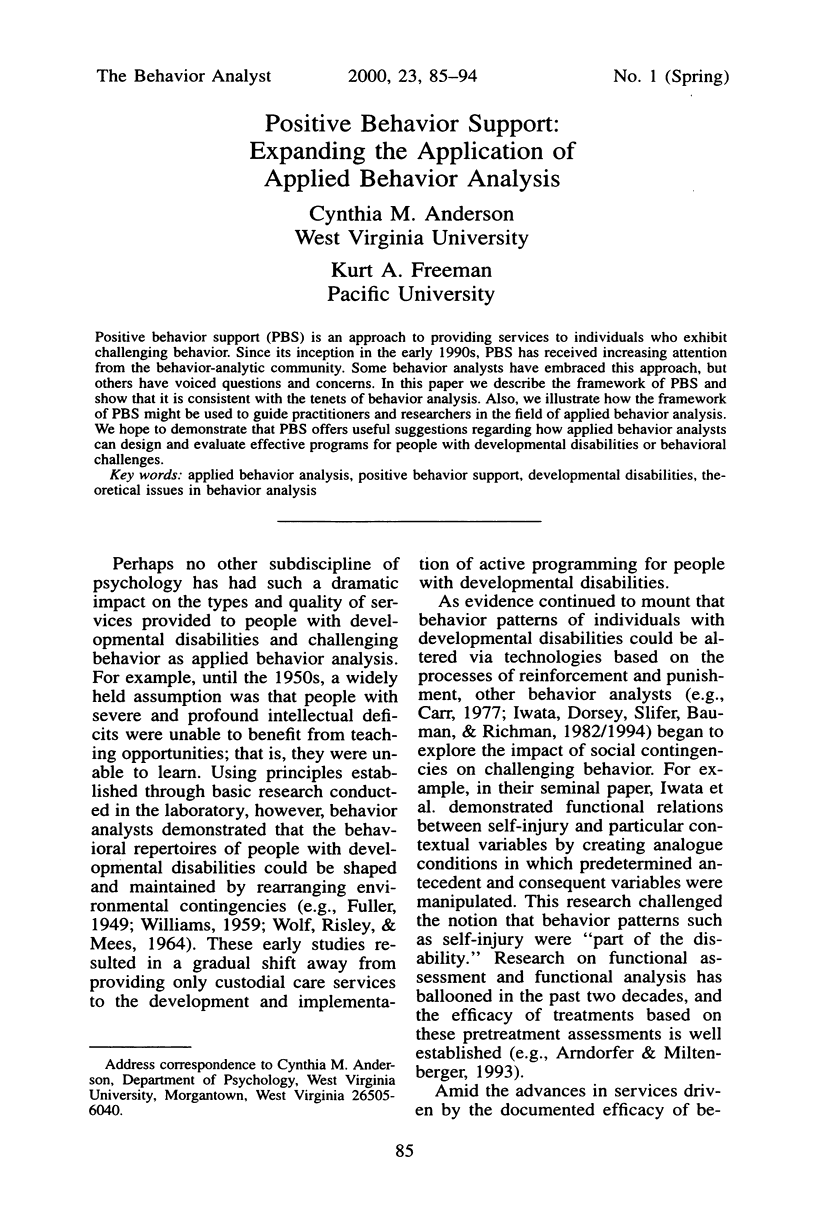
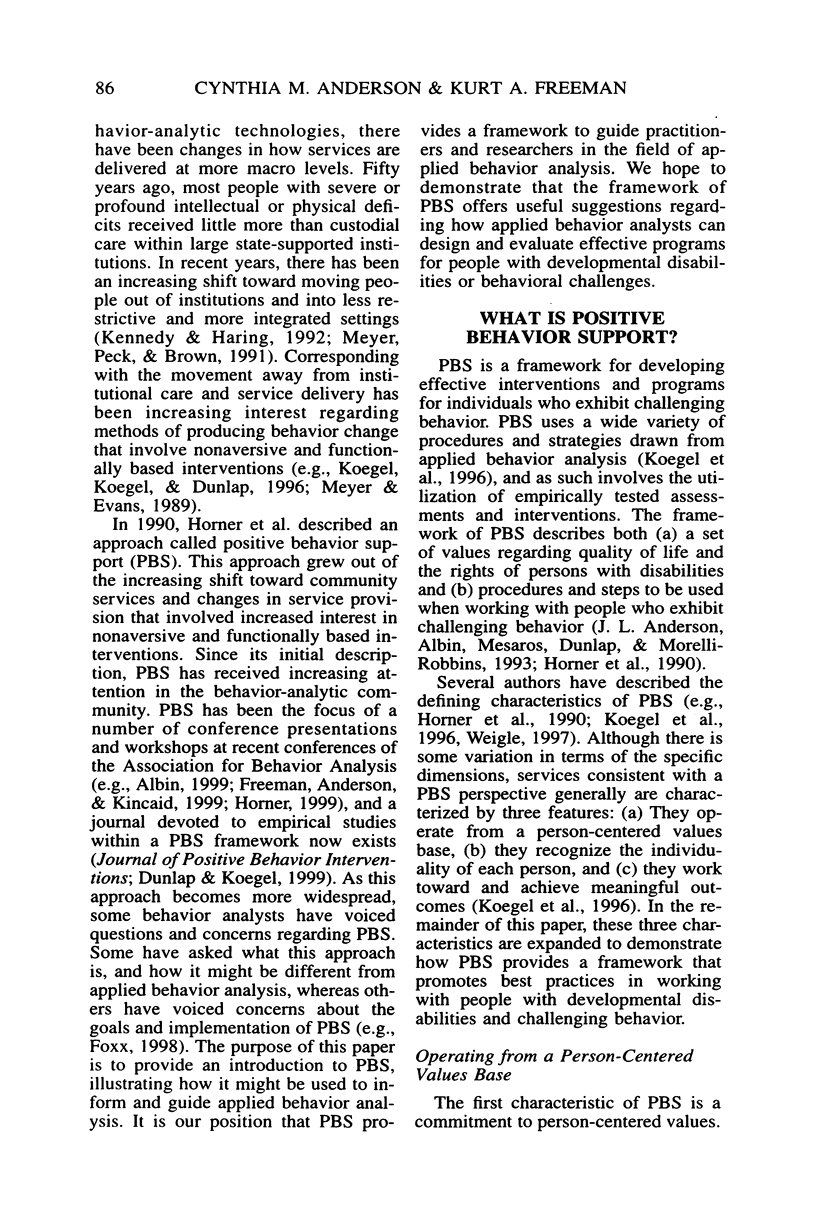
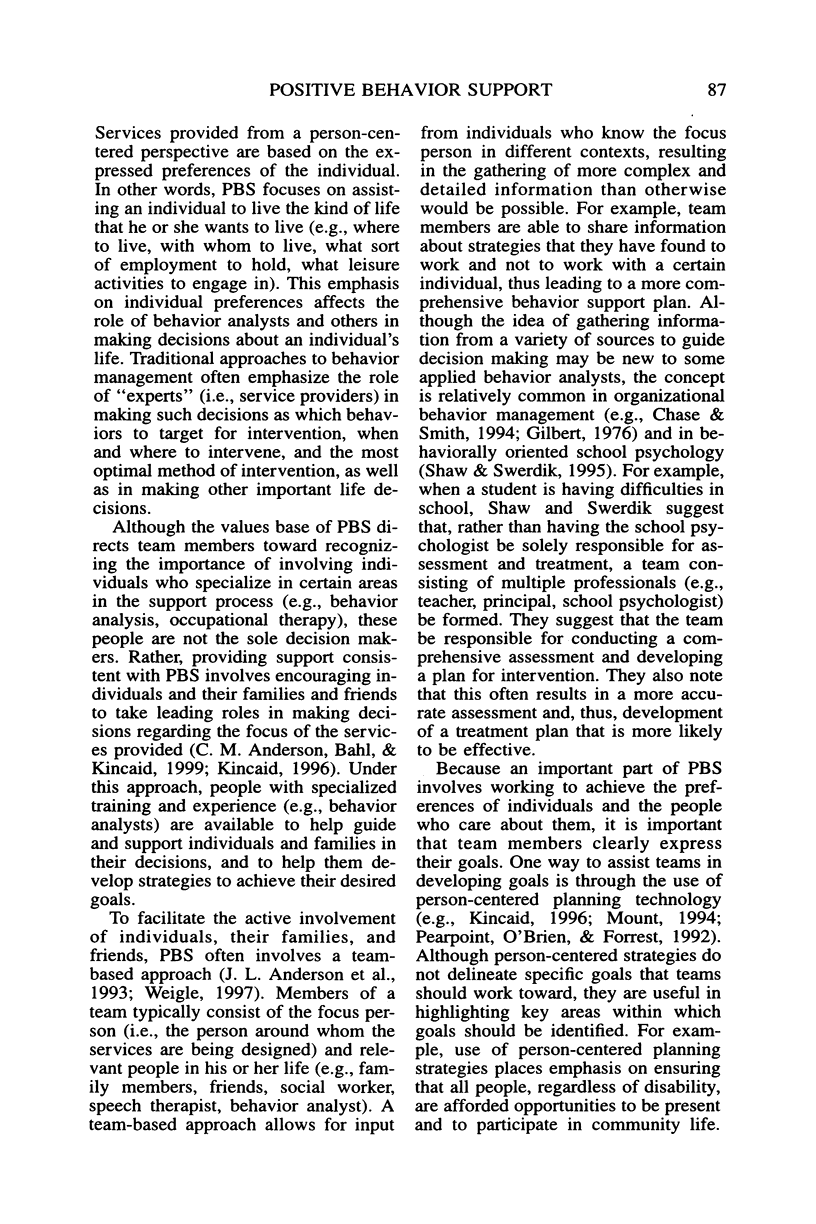
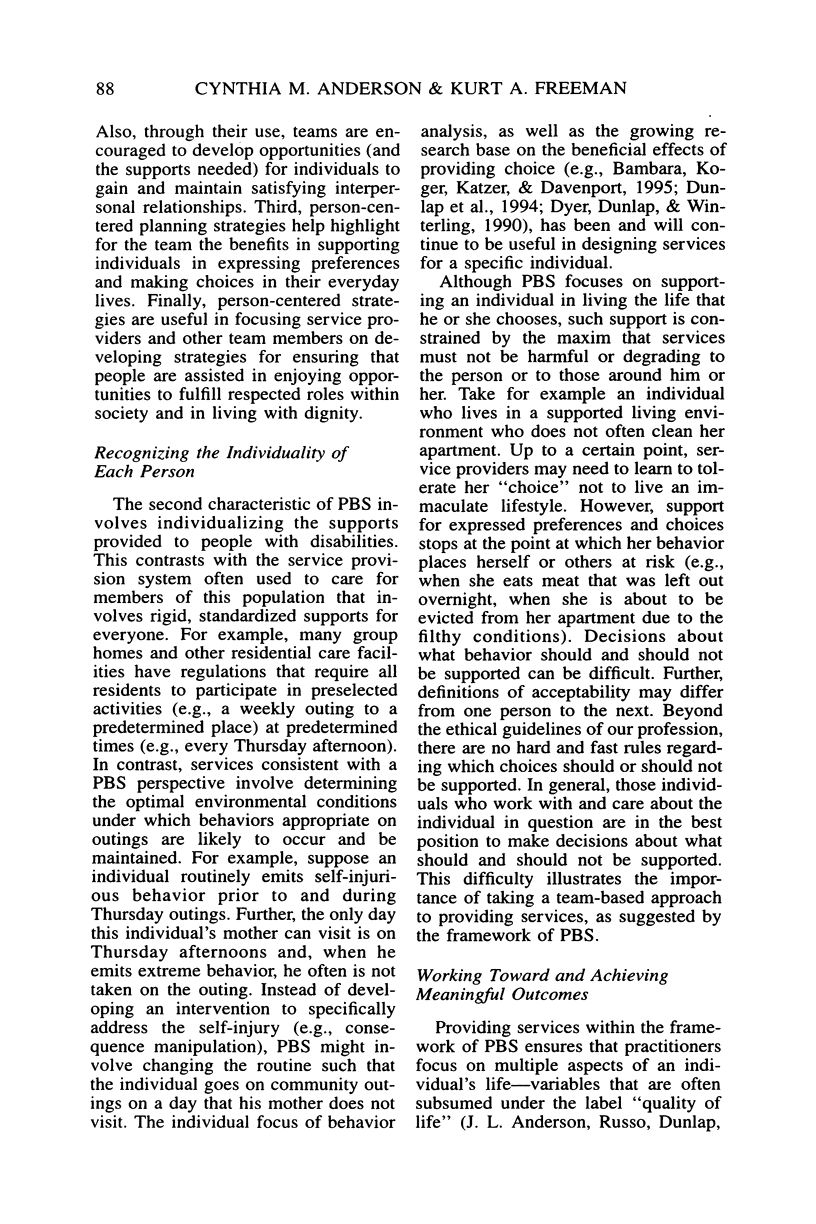
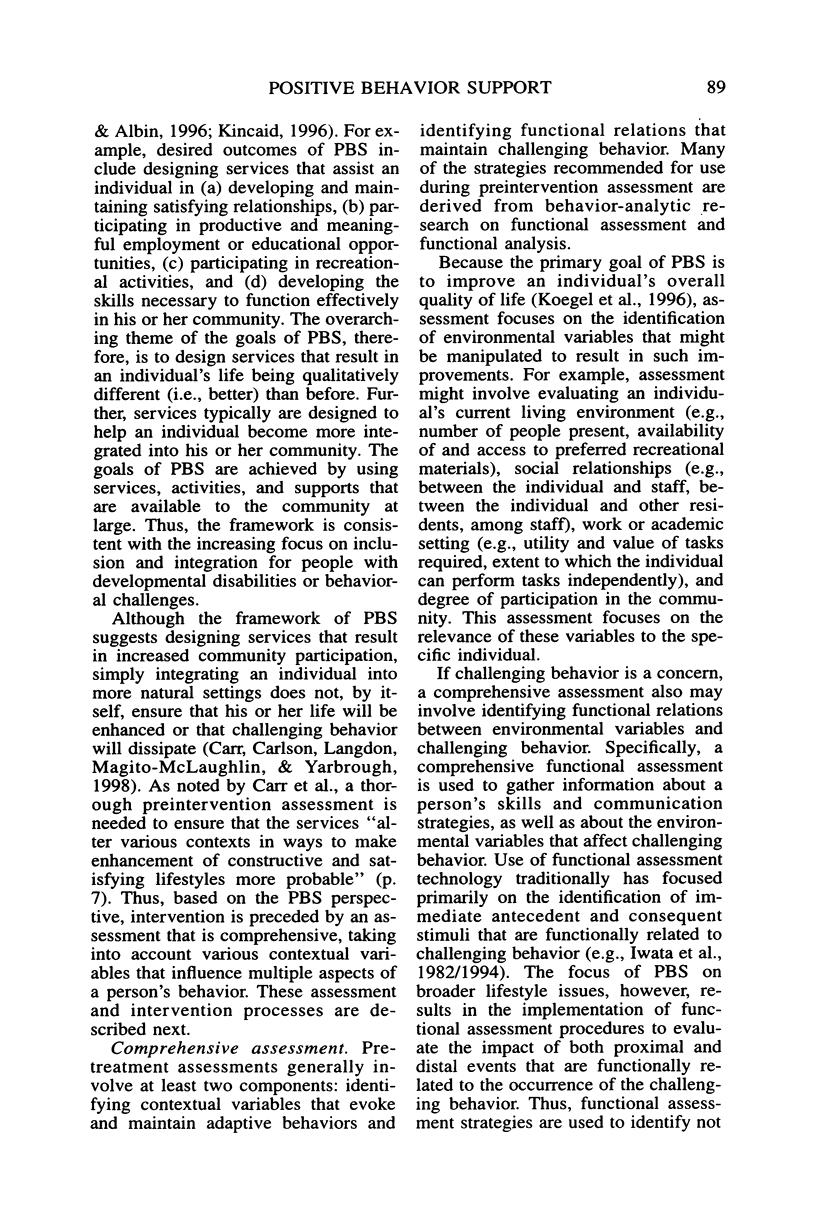
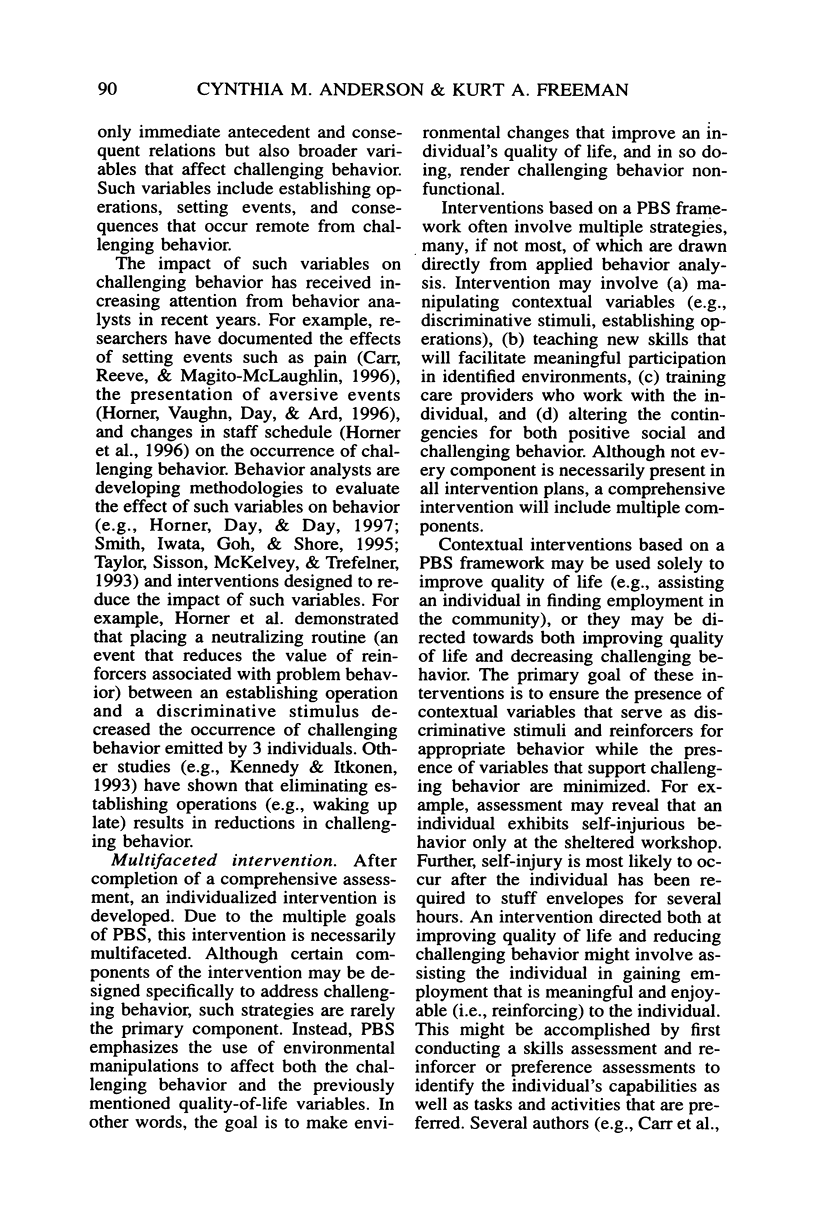
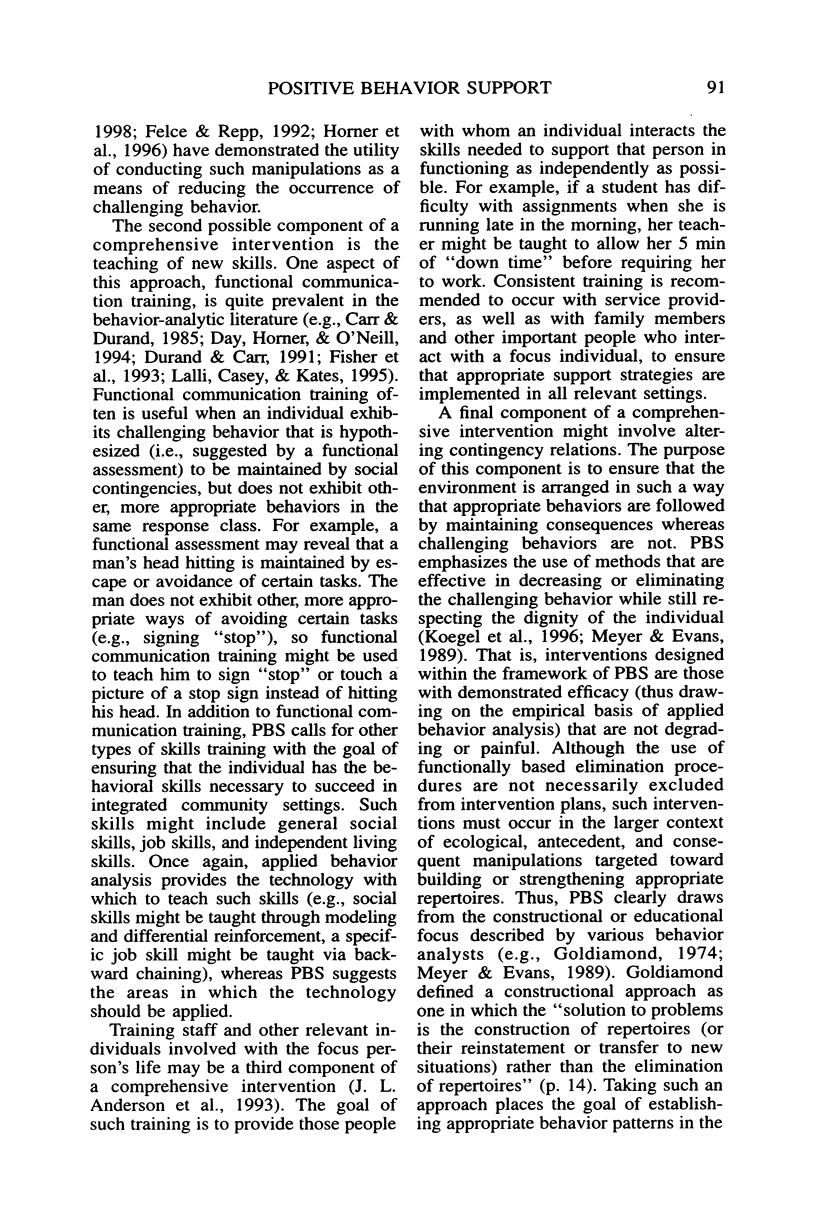
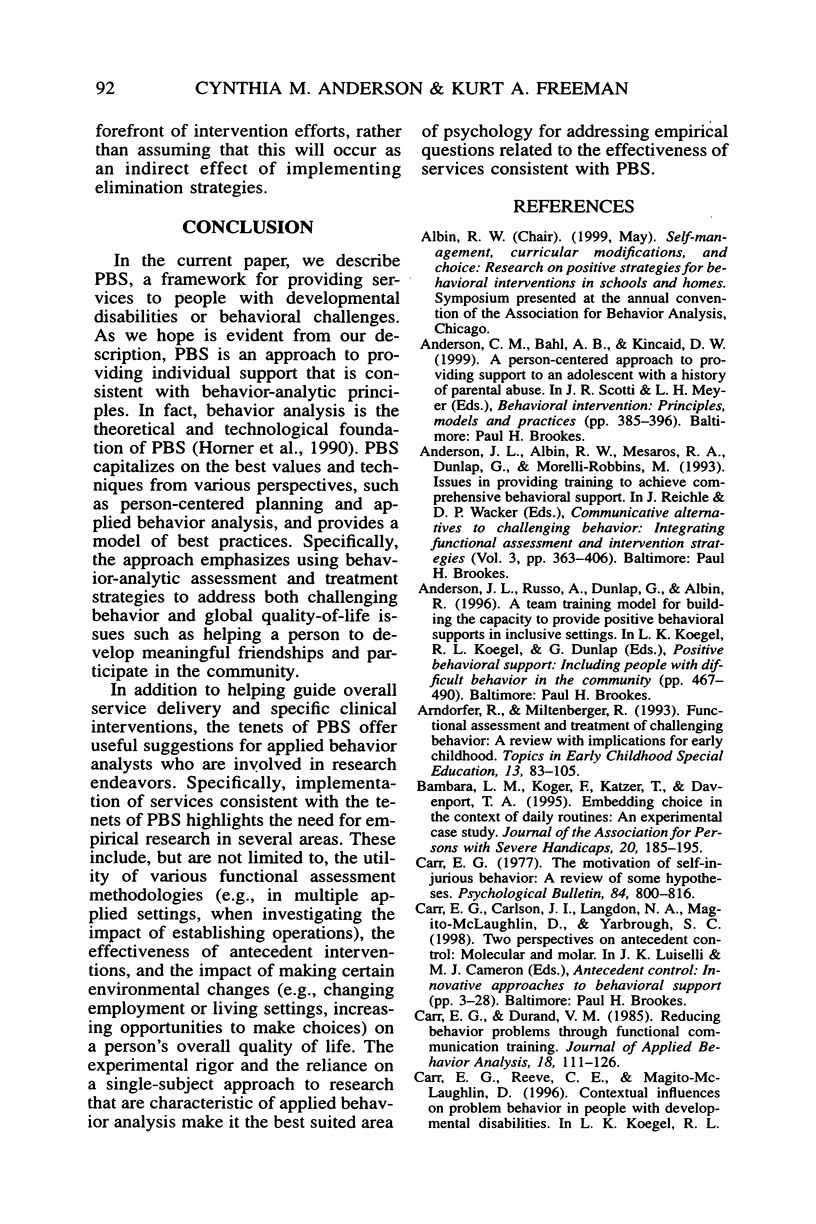
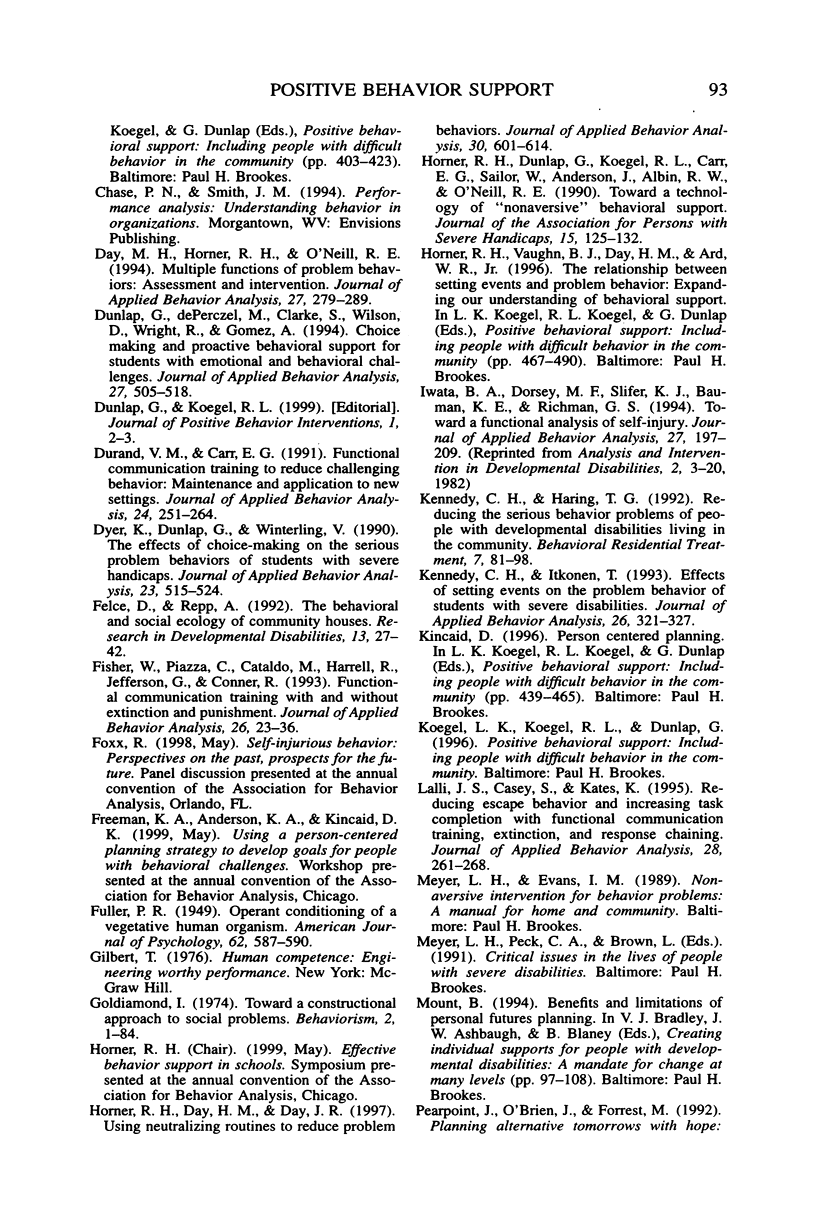
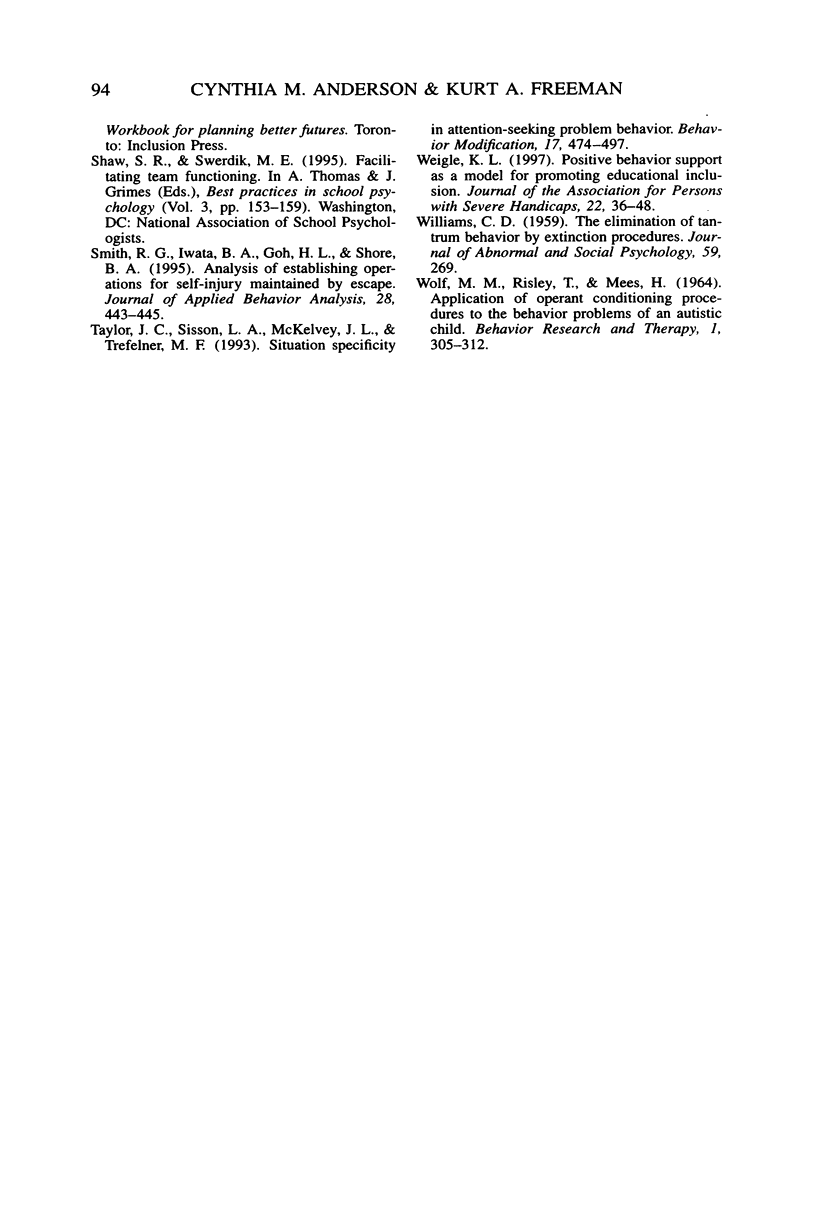
Selected References
These references are in PubMed. This may not be the complete list of references from this article.
- Carr E. G., Durand V. M. Reducing behavior problems through functional communication training. J Appl Behav Anal. 1985 Summer;18(2):111–126. doi: 10.1901/jaba.1985.18-111. [DOI] [PMC free article] [PubMed] [Google Scholar]
- Carr E. G. The motivation of self-injurious behavior: a review of some hypotheses. Psychol Bull. 1977 Jul;84(4):800–816. [PubMed] [Google Scholar]
- Day H. M., Horner R. H., O'Neill R. E. Multiple functions of problem behaviors: assessment and intervention. J Appl Behav Anal. 1994 Summer;27(2):279–289. doi: 10.1901/jaba.1994.27-279. [DOI] [PMC free article] [PubMed] [Google Scholar]
- Dunlap G., dePerczel M., Clarke S., Wilson D., Wright S., White R., Gomez A. Choice making to promote adaptive behavior for students with emotional and behavioral challenges. J Appl Behav Anal. 1994 Fall;27(3):505–518. doi: 10.1901/jaba.1994.27-505. [DOI] [PMC free article] [PubMed] [Google Scholar]
- Durand V. M., Carr E. G. Functional communication training to reduce challenging behavior: maintenance and application in new settings. J Appl Behav Anal. 1991 Summer;24(2):251–264. doi: 10.1901/jaba.1991.24-251. [DOI] [PMC free article] [PubMed] [Google Scholar]
- Dyer K., Dunlap G., Winterling V. Effects of choice making on the serious problem behaviors of students with severe handicaps. J Appl Behav Anal. 1990 Winter;23(4):515–524. doi: 10.1901/jaba.1990.23-515. [DOI] [PMC free article] [PubMed] [Google Scholar]
- FULLER P. R. Operant conditioning of a vegetative human organism. Am J Psychol. 1949 Oct;62(4):587–590. [PubMed] [Google Scholar]
- Felce D., Repp A. The behavioral and social ecology of community houses. Res Dev Disabil. 1992;13(1):27–42. doi: 10.1016/0891-4222(92)90038-8. [DOI] [PubMed] [Google Scholar]
- Fisher W., Piazza C., Cataldo M., Harrell R., Jefferson G., Conner R. Functional communication training with and without extinction and punishment. J Appl Behav Anal. 1993 Spring;26(1):23–36. doi: 10.1901/jaba.1993.26-23. [DOI] [PMC free article] [PubMed] [Google Scholar]
- Goldiamond Israel. Toward a constructional approach to social problems: ethical and constitutional issues raised by applied behavior analysis. Behaviorism. 1974 Spring;2(1):1–84. [PubMed] [Google Scholar]
- Horner R. H., Day H. M., Day J. R. Using neutralizing routines to reduce problem behaviors. J Appl Behav Anal. 1997 Winter;30(4):601–614. doi: 10.1901/jaba.1997.30-601. [DOI] [PMC free article] [PubMed] [Google Scholar]
- Iwata B. A., Dorsey M. F., Slifer K. J., Bauman K. E., Richman G. S. Toward a functional analysis of self-injury. J Appl Behav Anal. 1994 Summer;27(2):197–209. doi: 10.1901/jaba.1994.27-197. [DOI] [PMC free article] [PubMed] [Google Scholar]
- Kennedy C. H., Itkonen T. Effects of setting events on the problem behavior of students with severe disabilities. J Appl Behav Anal. 1993 Fall;26(3):321–327. doi: 10.1901/jaba.1993.26-321. [DOI] [PMC free article] [PubMed] [Google Scholar]
- Lalli J. S., Casey S., Kates K. Reducing escape behavior and increasing task completion with functional communication training, extinction, and response chaining. J Appl Behav Anal. 1995 Fall;28(3):261–268. doi: 10.1901/jaba.1995.28-261. [DOI] [PMC free article] [PubMed] [Google Scholar]
- Taylor J. C., Sisson L. A., McKelvey J. L., Trefelner M. F. Situation specificity in attention-seeking problem behavior. A case study. Behav Modif. 1993 Oct;17(4):474–497. doi: 10.1177/01454455930174004. [DOI] [PubMed] [Google Scholar]
- WILLIAMS C. D. The elimination of tantrum behavior by extinction procedures. J Abnorm Soc Psychol. 1959 Sep;59:269–269. doi: 10.1037/h0046688. [DOI] [PubMed] [Google Scholar]


